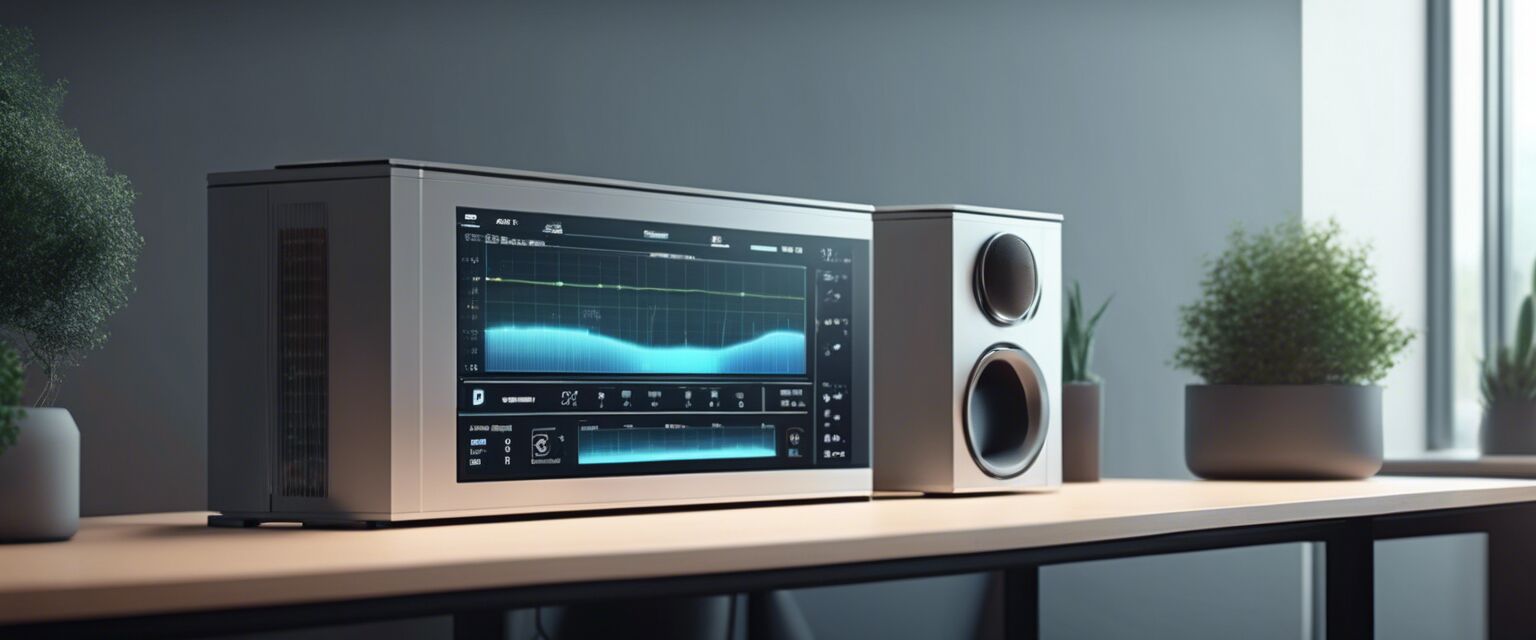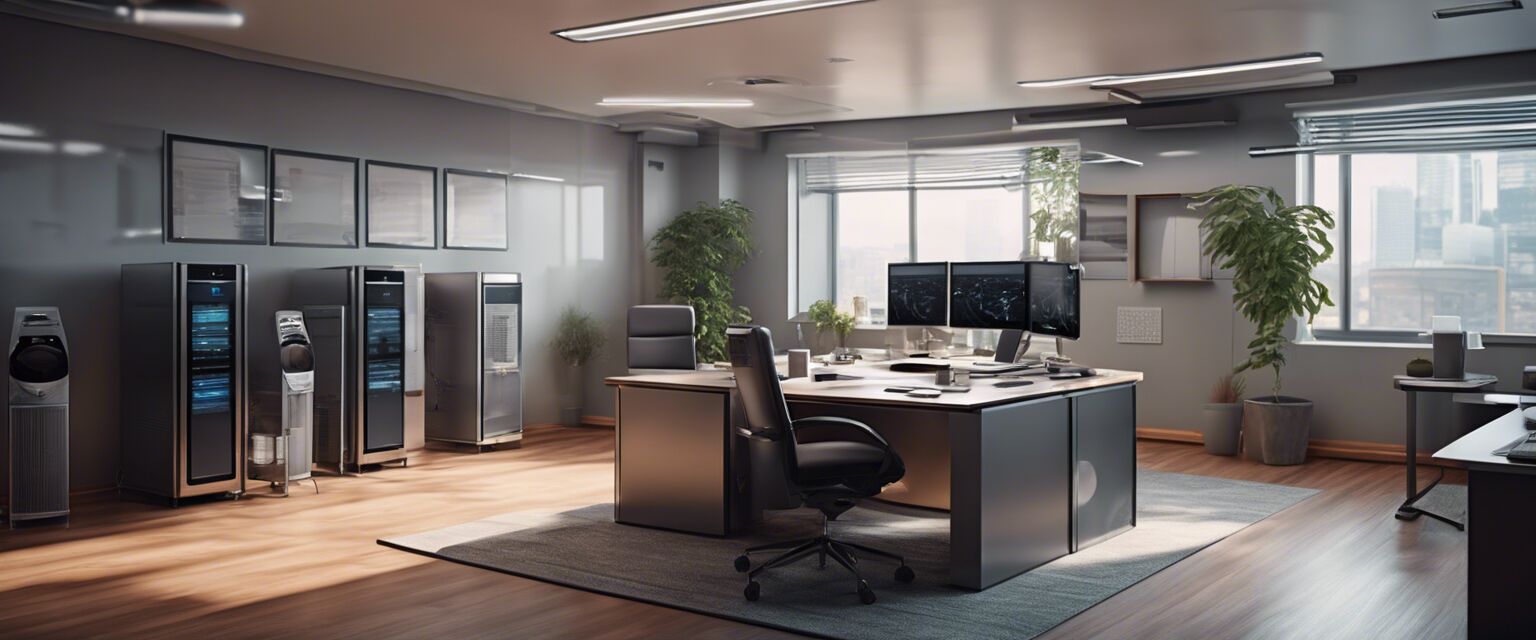
Smart Climate Control
In today's fast-paced work environment, maintaining comfort while ensuring energy efficiency is paramount. Smart climate control systems are revolutionizing how we think about temperature management in office settings. From programmable thermostats to advanced climate control solutions, these tools ensure a pleasant workspace that can adapt to individual preferences and save energy. In this article, we will explore the benefits, features, and considerations when choosing a smart climate control system for your office.
Key Takeaways
- Smart climate control systems enhance comfort and boost productivity.
- Energy-efficient models can significantly reduce heating and cooling costs.
- Many systems integrate with existing smart office technology for seamless control.
- Key factors to consider include compatibility, installation, and user-friendliness.
- Regular updates and maintenance can prolong system lifespan.
Understanding Smart Climate Control Systems
Smart climate control systems refer to technology that manages heating, ventilation, and air conditioning (HVAC) to optimize the comfort level of a workspace. These systems often incorporate sensors, software applications, and automation to adjust temperature settings based on real-time data.
Components of Smart Climate Control Systems
| Component | Description |
|---|---|
| Smart Thermostats | Device that allows remote temperature control and programming through an app or voice command. |
| HVAC Sensors | Sensors that monitor temperature, humidity, and air quality to optimize settings automatically. |
| Smart Ventilation Systems | Automated systems that regulate air circulation and improve indoor air quality. |
| Energy Management Software | Tools that provide insights into energy usage and suggest optimizations. |

Benefits of Smart Climate Control in Offices
Implementing smart climate control systems can lead to numerous benefits for your office environment. Here are the most significant advantages:
- Enhanced Comfort: Provides a stable and pleasant temperature, improving employee satisfaction and productivity.
- Energy Efficiency: Reduces energy consumption and overhead costs by optimizing heating and cooling schedules.
- Remote Accessibility: Allows users to control settings from anywhere via phone, tablet, or computer.
- Environmental Impact: Promotes sustainability by minimizing the carbon footprint associated with excessive energy use.
How Smart Climate Control Works
These systems use various technologies to create a responsive environment. Hereâs how they typically work:
- Data Collection: Sensors gather real-time data on temperature, humidity, and occupancy levels.
- Analytical Processing: The system analyzes the data to identify patterns and efficiency opportunities.
- Adjustment: Based on analysis, the system automatically adjusts HVAC settings to maintain optimal conditions.
- User Input: Users can manually adjust settings through an app, allowing for personalized comfort.
Installation and Integration
Integrating smart climate control systems into your existing setup may vary based on your current HVAC configuration. It's essential to consider:
- Compatibility: Ensure that the smart system is compatible with your current HVAC units.
- Professional Installation: Hiring experts can guarantee setup is done correctly.
- Integration with Other Systems: Some systems work best when combined with other smart office solutions.

Choosing the Right Smart Climate Control System
When selecting a smart climate control system, consider the following factors to ensure you make the best choice for your office:
Tips for Beginners
- Define Your Needs: Assess your office size, climate, and specific comfort needs.
- Research Features: Look for features that enhance user experienceâlike remote control, voice commands, and automation.
- Read Reviews: Check customer feedback on product performance and reliability.
- Compare Brands: Different brands offer varying technologies; compare options thoroughly.
- Consider Warranty: A solid warranty can save costs in case of future issues.
Potential Drawbacks
While smart climate control systems offer numerous advantages, there are potential drawbacks to be aware of:
Pros
- Improved energy savings and cost reduction.
- Customizable settings enhances user experience.
- Increased control over workspace comfort.
Cons
- Initial installation costs may be high.
- Learning curve for new users.
- Dependence on reliable internet connectivity.
Conclusion
Smart climate control systems can transform the way we manage workplace comfort and energy efficiency. By carefully selecting the right technology and integrating it with existing systems, businesses can create a more productive environment while reducing operating costs. Whether you're investing in a smart thermostat or a comprehensive climate management solution, the right choices will lead to long-term benefits.
Explore our other articles on related topics to further enhance your smart office setup:










